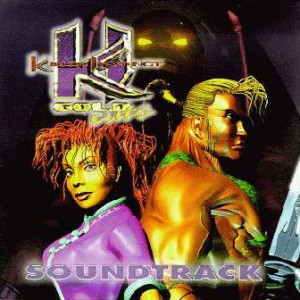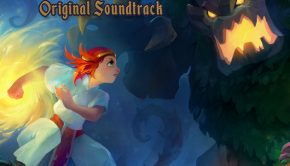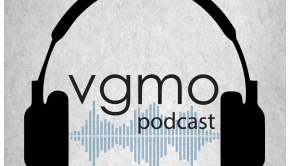Killer Instinct Gold Soundtrack
 |
Album Title: Killer Instinct Gold Soundtrack |
| Record Label: Nintendo of America |
|
| Catalog No.: 1530-Winter96 |
|
| Release Date: November 1996 |
|
| Purchase: Download at Amazon MP3 (packaged with Killer Instinct Season 2 Original Soundtrack) |
Overview
Along with the release of Mick Gordon’s substantial revamp of the classic music in Killer Instinct Season 2 came Killer Instinct Gold Cuts, the score to the console version of the original sequel of the series, released in 1996 by Rare and Nintendo. Killer Instinct Gold, the N64 port of Killer Instinct 2, struggled to please fans upon its initial release, but was welcomed as one of the few fighting games available on the console. The music, composed by Robin Beanland, has made an impact on fans, and although the recent reboot of the series had led to a new version of character themes, the classic set remains a staple in the array of fighting game scores.
Body
The opening track is, of course, the iconic title theme, bringing together a gritty rock style with an unquestionably nineties combination of synth and ambiguous percussion. Length is not a concern on this album; each track delivers its concise message, loops a number of times depending on the length of a single loop, and promptly concludes. The more fully realized renditions of tracks like the main theme – along with the character themes – that Gordon develops in the recent reboot are not yet in existence, and instead each theme is a raw piece, completed with in-character synth instruments and melodies.
“Maya” opens with the sound of shrieking primates and birds, and breaks into a fast-paced but steady pulse, laid out against pipes, male chants, returning animal cries, and an anachronistic bass melody. The theme is one of a few on the album to also appear in remixed form, which emphasizes the Amazonian nature of Maya’s character. The animals are back, this time with elephants, and the pipes oscillate between synth aerophones and beeps. The same bass melody returns, but is more peppered with the jungle elements, and more drawn-out. It isn’t until almost two minutes in that the melody first plays, and continuously pauses to leave room for the pipes and vocals.
“Sabrewulf” quickly shifts the gear of the album to a kind of 8-bit renaissance setting, adorned with ominous laughter and haunted whistles. I have to say that this is one of my favorite melodies, as castle themes in games have always appealed to me, and “Saberwulf” reminds me very much of a typical platform game’s epic castle stage. “Jago” takes us further East with an odd combination of heavy male choral-percussion and some kind of sitar. The juxtaposition of twanging melody and dramatically emphasized downbeats give the piece its unique flavor, which returns in another remix with a more substantial solo and more ornamentation.
While some tracks depend heavily on instrumentation to create the musical identity of each character or area in the classic fighting game, some themes rely more heavily on the melodic structure. “Tusk” has one of the most prominent and melodic themes of the album, played on very strong trumpet (performed by Grant Kirkhope, interestingly) backed by percussive bursts and even the occasional brassy elephant-like eruption from the horns. “Orchid” begins with a surprisingly soulful song before jumping into a wholly nineties rhythm, complete with vocal echoes and electronic melodic symmetry. On the other end of the nineties spectrum, “Glacius” is much more raw in terms of its use of electronics, embedding in the flickering electric synth instrumentation a rough, rasping melody (and an extremely catchy one at that).
Vocals make their way into a few more of the character themes – “Fulgore” has a more prominently eighties rock theme with a few choir-held chords as the piece rips through some eerie chord progressions between guitar solos (also performed by Kirkhope). “Spinal” brings the vocals back to a more medieval setting, with a cartoonishly simple bassline and an accompanying unison choir. The lack of complex chords and rhythms allows this piece to stand out in a very bare way from the others on this album, which tend to have much more going on in them at any given time. While “Spinal” is certainly not my favorite track on the album, I think it’s also a welcome one, to give a break from the
The album concludes with a some bonus tracks, remixes and demos, including an alternate version of the character select menu and early demos of “Combo” and “Maya,” which were since changed to become the themes featured in the main tracklist. The most developed is the closing track, an alternate version of “Title Theme” that extends past three minutes in length, and offers adequate buildup of the theme that both opens and permeates the album.
Summary
The Killer Instinct Gold album is a must-have for fans of the series, and the fact that it comes with the purchase of the Killer Instinct Season 2 (reviewed here) is a bonus. While the tracks are short, they represent what are now well-known themes those familiar with the classic arcade or N64 fighting game, and it’s wonderful to finally have them easily accessible as part of a soundtrack package.
Do you agree with the review and score? Let us know in the comments below!
4
Posted on September 9, 2015 by Emily McMillan. Last modified on September 12, 2015.














